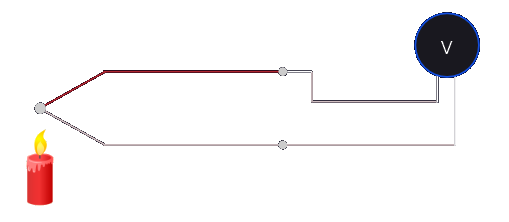
So, other then alternators, which are larger rotating machines that produce most of the electric power in the world, there are other sources of electricity, that are smaller and are used for emergency situations or for the operation of portable electric devices. The most common of these is the battery. Batteries are used to start automobiles and to operate toys, flashlights, portable communications equipment, computers, watches, calculators, and hundreds of other devices. They range in size from small enough to fit into a hearing aid to large enough to operate electric forklifts and start diesel trucks.
Solar cells
Although batteries are the largest source of electricity after alternators and generators, they are not the only source. One source of electricity is the photovoltaic cell or solar cell.
Solar cells are constructed from a combination of P-type and N-type semiconductor material. Semiconductors are made from materials that contain four valence electrons. The most common semiconductor materials are silicon and germanium. In order to form P-type and N-type materials, impurities must be added to the pure semiconductor material. If a material containing three valence electrons is added to a pure semiconductor material, P-type material is formed. P-type material has a lack of electrons. N-type material is formed when a material containing five valence electrons is added to a pure semiconductor material. N-type material has an excess of electrons.
Light is composed of particles called photons. A photon is a small package of pure energy that contains no mass. When photons strike the surface of the photocell, the energy contained in the photon is given to a free electron. This additional energy causes the electron to cross the junction between the two types of semiconductor material and produce a voltage.
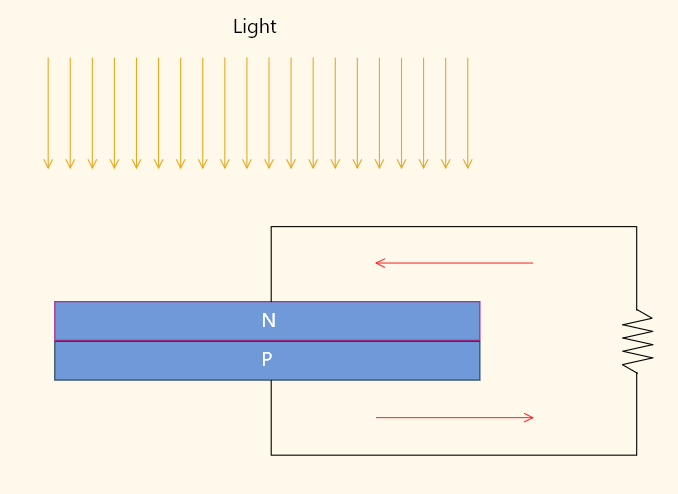
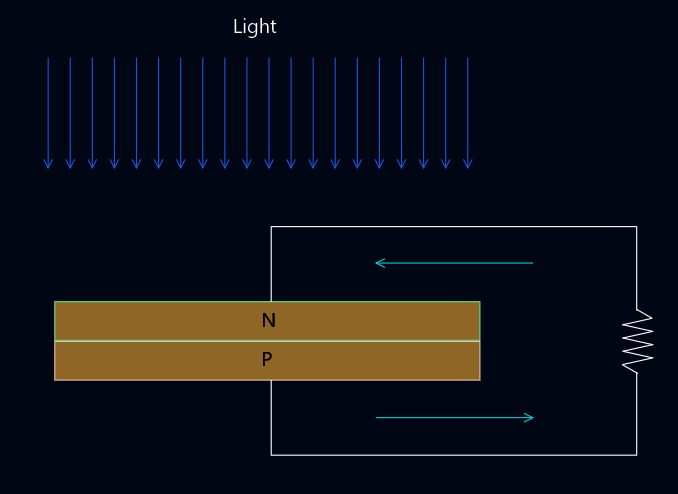
The amount of voltage produced by a solar cell is determined by the material from which it is made. Silicon solar cells produce an open-circuit voltage of 0.5 volts per cell in direct sunlight. The amount of current a cell can deliver is determined by the surface area of the cell.
Since the solar cell produces a voltage in the presence of light, the schematic symbol for a solar cell is the same as that used to represent a single voltaic cell with the addition of an arrow to indicate it is receiving light.
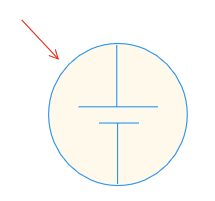
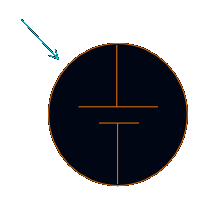
It is often necessary to connect solar cells in series or parallel or both to obtain desired amounts of voltage and current.
Thermocouples
In 1822, a German scientist named Seebeck discovered that when two dissimilar metals are joined at one end and that junction is heated, a voltage is produced. This is known as the Seebeck effect. The device produced in this way that is used for the purpose of producing electricity with heat is called a thermocouple.
The amount of voltage is determined by:
1. - the type of materials used to produce the thermocouple
2. - the temperature difference between the junction and the open ends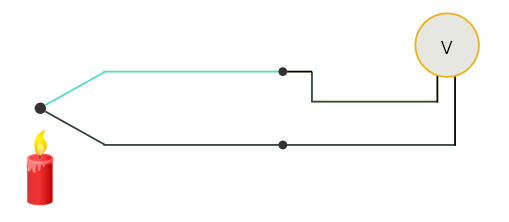
Because thermocouples produce low voltages, they are often connected in series. This connection is referred to as a thermopile.
Piezoelectricity
Piezoelectricity is produced by some materials when they are placed under pressure. The word piezo is derived from the Greek word for pressure. The pressure can be caused by compression, twisting, bending, or stretching.
Energy, work, heat and power
Energy is probably one of the most fundamental concepts in physics; it never appears from nowhere, nor does it disappear into nothingness. Energy is the ability to do work. It cannot be created nor can it be destroyed. So, it’s very much easier to explain what it does or how it behaves, rather than what it is.
Energy is categorized into two categories:
• potential energy
• kinetic energy
We can think of potential energy as ‘energy waiting to be used’, and includes chemical, gravitational, and nuclear energies. We can think of kinetic energy as ‘energy an object acquires through movement’, and includes electrical, light, and sound energies.
For example, an object suspended above the ground is said to possess potential energy. That same object, as it falls under the influence of gravity, loses that potential energy and acquires exactly the same amount of kinetic energy.
Work is usually defined as ‘force multiplied by the distance moved in the direction of that force’. Also we define work as ‘the process of converting one form of energy into another’.
For example, a generator is a machine which converts kinetic energy into electrical energy – so that generator is doing work. An electric motor converts electrical energy into kinetic energy – so it, too, is doing work. Any machine that changes one form of energy into another is doing work.
Heat is ‘the process of transferring energy from a warmer body to a cooler body’.
One thing in common with all electrical devices is, as they operate, heat is generated. In every component there is some amount of equivalent resistance, and consequence of current flow is that power turns into heat. Sometimes, this is desirable, such as in electric kettle, but in the case of electric wire or conductor, this represents energy loss through heat transfer into the surroundings. The process which results in an increase in a conductor’s temperature due to an electric current is described by ‘Joule heating’. Joule heating is the result of collisions between a conductor’s free electrons and its fixed atoms/ions. The sudden loss of the electrons’ kinetic energy causes a corresponding increase in the conductor’s internal energy and, because the two are linked, a corresponding increase in its temperature.
Power is the rate of doing work or the rate of heat transfer. Since power is rate, i.e. energy divided by time, the unit for power is joule per second, which is watt (symbol: W), named after James Watt, Scottish engineer. Work, heat and energy share the same measurement unit, joule (symbol: J), named after English scientist, James Prescott Joule.
Also, we should mention that horsepower converted into watts equals: 1HP = 746W.
We have learned earlier that:
• E - voltage (V)
• W - work (J)
• Q - electric charge (C)
So, we can write that W=E‧Q, and since Q=I‧t, we get relation: W=E‧I‧t .
As power is defined as the rate of doing work P=W/t, that means: P=E‧I .
Furthermore, because I=E/R, we can write alternative equations for both work and power: 

The total power of any type of circuit is the sum of the powers developed by that circuit’s individual components.
Example:
Calculate the rate at which energy is lost when a conductor of resistance 0.5 Ω carries a current of 13 A.
Solution:
The rate at which energy is lost is the same as ‘power loss’.
P=I2‧R = 132x0.5 = 84.5 W
Power ratings
Electrical appliances are required to have displayed the rated power at which they are designed to operate. The rated power is always shown together with the rated voltage, because an appliance will only develop its rated power at its rated voltage. That is why lamps and other residential electrical loads must be connected in parallel. Only by connecting them in parallel, they will be enabled to operate at their rated power, because they are all connected on the rated supply voltage.
With some types of electrical device, though, the power rating indicates the ‘maximum power’ at which that device is designed to operate without overheating, and not its normal ‘operating power’. Resistors, for example, can operate quite normally well below their power rating, but if they are allowed to exceed their power rating, then they will likely overheat and burn out.
Efficiency
Energy supplied to a load doesn't go in complete into doing useful work. Some of the energy is lost - for example, for an electric motor, it's lost overcoming friction, windage, vibration and heat transfer into the sorrounding atmosphere. So the useful work available from a motor is always somewhat less than the electrical energy supplied to the motor. Rotating machines, such as motors, are always less efficient than stationary machines, such as transformers, due to the friction of their bearings, windage losses, etc.
In practice, we talk about input power, output power and power losses.
Motors are always rated according to their output power, as this is what is available from the motor to drive their load.
The ratio: output power divided by input power is termed efficiency, 
Efficiency is ratio, so it doesn't have measurement unit; it is expressed either as a per unit value or as a percentage value.
percentage = (per unit x 100) %
There is no ‘lossless’ energy transfer, so efficiency can never reach unity (or 100%). Even the most efficient electrical machine, the transformer, can only achieve a full-load efficiency of around 95%–98%.







